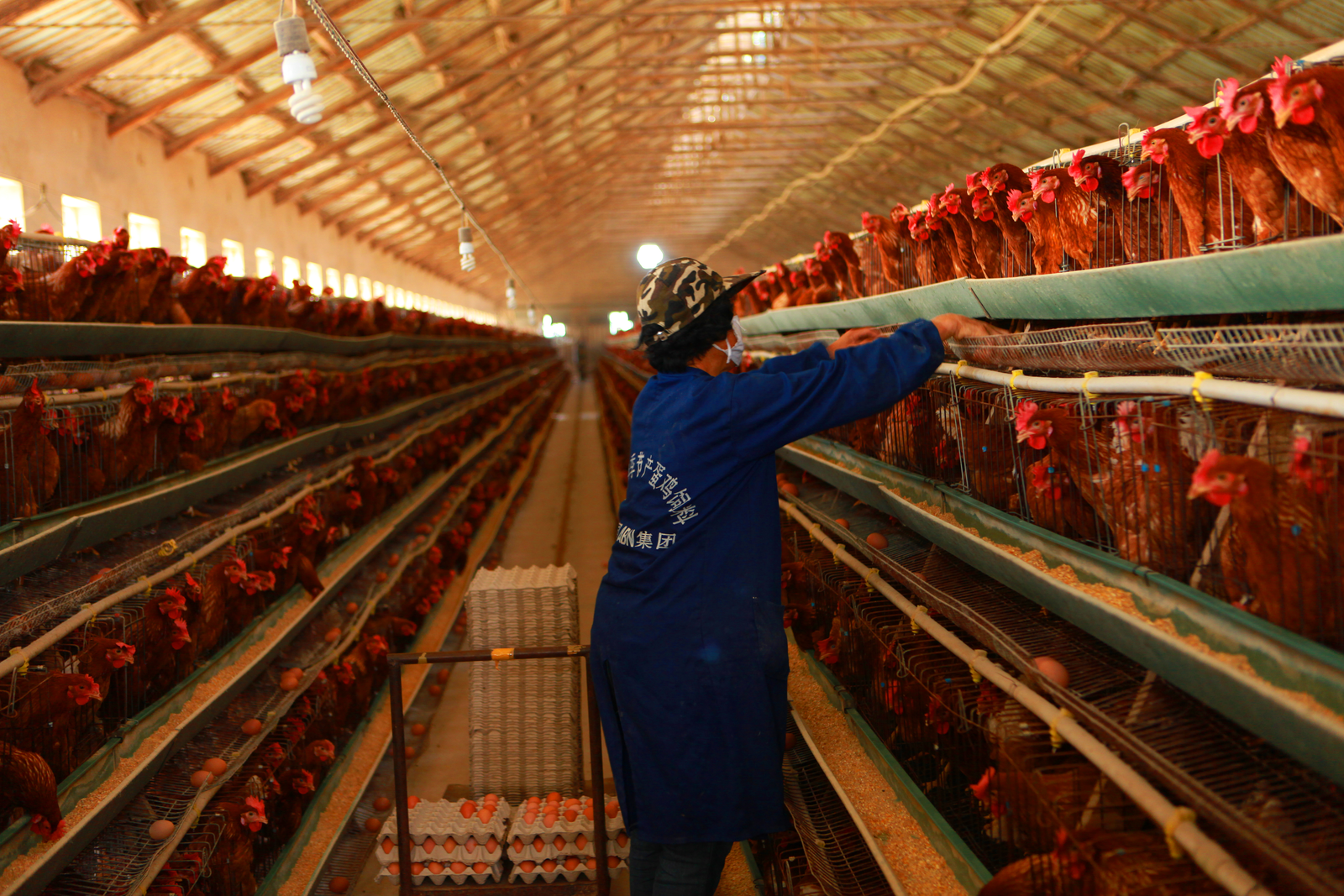Asian market snapshot - local expert views

What are the challenges facing the market and feed suppliers in Asia? A group of locally based experts from ABCA have commented on the impact of bird flu on the Chinese poultry market, the expansion of dairy business in China, record high chicken prices in India and their local commitment.
By Kaori Nishide
Dr Jeff Wu, as a commercial director in China, how severe has the impact been of the new H7N9 bird flu which broke out earlier this year?
Dr Wu: H7N9 has had a detrimental impact on the Chinese Poultry Industry. According to media reports, it is estimated that the industry has suffered a loss of RMB 15 billion (1.8 billion euros).
Since May 2013, the Chinese government has taken actions to help the industry eg. introducing subsidies for large-scale producers. In some cities like Shanghai, live bird trade markets have re-opened.
Are consumers shifting to other animal proteins, and is the demand for imported meat increasing?
Dr Wu: Yes, consumers are shifting to other sources of animal protein eg. fish. Also, imports from the US are increasing. It will take time to regain customer confidence in poultry meat, like we have experienced in other livestock products in the last few years. We expect recovery to be gradual and take place over the next 6-12 months.
What measures are the industry players taking?
Dr Wu: Industry players are waiting for market recovery. It is a tough time but there is not much more they can do than wait, as the market demand will certainly come back when they can restart full operations.
Foot and mouth disease is also a serious animal health issue in China. James Charteris-Hough, you have years of experience in the local industry as a managing director, how do they protect large-scale farms?
Charteris-Hough: The current status is not one of eradication but of containment – hence the vaccination policy. Many larger farms do have effective biosecurity measures already in place to safeguard against incoming infection and this will become standard in due course but naturally there cannot be 100% protection.
Turning the topic to the dairy industry in China, what are the key considerations in your view for the booming industry?
Charteris-Hough: I have given my views more extensively in the upcoming special edition titled Dairy Digest which will appear in a few months. Briefly, cash is an ongoing problem which either directly slows growth or puts pressure on suppliers. The largest
businesses seek outside private or public investment from within China or Hong Kong most commonly. Secondly, large dairy units need to invest in effluent treatment plants which can create a cleaner environment but are a
significant cost. Consistent supply of quality feed ingredients and fibre, especially fibrous products like alfalfa are a big challenge. Although many farmers grow alfalfa themselves, currently there is a reliance on imported alfalfa which has a premium. Maize forage or domestically produced alfalfa (typically of lower quality) supplied by contracted growers, is being highly encouraged by the Chinese authorities.
With regards to genetics and import costs, yes there are constraints but
current margins on milk and the outlook on growth is stimulating businesses to make these investments. It would be a mistake to believe that China is a cheap place to produce milk.
Now we move on to India. High volatility in chicken prices has been witnessed since last year. Dr Romila iyer, how do you analyse the market trend as a business manager for South Asia?
Dr iyer: India is experiencing a price hike in the cost of animal protein. Restricted production combined with an increase in raw material price and production costs have taken chicken and egg prices to a new high. Industry experts say that this trend is likely to continue with some slight fluctuation for the next couple of months. But it may take up to 2–3 years to make up for these losses. Apart from the above factors, a harsh summer has resulted in huge bird mortality across North and South India, while farmers in other regions slowed production to reduce their losses. Jagbir Singh Dhull from Skylark Hatcheries, one of the most renowned and respected poultry integrators in North India, commented: “temperature has played a major role in altering broiler price in North India. Severe mortality and poor body weight has resulted in reduced meat output leading to price increases. However, this should not be a long term trend.”
What are the drivers of the expected price recovery?
Dr iyer: Now, with the arrival of the monsoon season, demand for chicken has risen in the western states. In addition, trawling has been banned in South Indian states like Kerala and Karnataka, which has resulted in a decline of fish caught. This has also led to an increase in chicken consumption and demand. Industry experts say that the major contributor to the increase in chicken price is the cost of feed which has doubled in comparison to 2012. Severe drought has reduced maize production leading to a price increase for maize, and the soya price has doubled. As a result, feed volumes have fallen by as much as 30%. In addition, the above factors have severely affected small sized farmers both in the layer and broiler sector so significantly that they did not replace (repopulate) birds in their farms to avoid loss.
Dr Dinesh Bhosle, chairman of CLFMA, a livestock industry association in India, expressed that high raw material prices and restricted production may continue into the second quarter of 2014 and will dictate the cost of production, as well as the price of chicken meat and eggs. He also said by 2020 egg production is estimated to reach 93 billion and broiler placement to 100 million per week. Currently the broiler industry is growing at the rate of 8–10% and layers at 4–5 % per annum.
What is the reaction of the market? Are consumers prepared to buy chicken and eggs despite the price volatility?
Dr iyer: With regards to consumers, amidst consistent high prices of vegetables and fuel, the sudden increase in the prices of chicken and eggs has been a big blow to them. According to retailers, many consumers who visit meat shops take home only half of what they usually buy. However, caterers and hoteliers say they have not increased the price of non-vegetarian dishes or compromised on quantity. Profits have come down by at least 30% as the price of chicken, eggs, mutton and vegetables have gone up.
Given the regional situation and different approaches by local industry and governments, what do you consider the role of ABCA to be?
Charteris-Hough: Taking advantage of well-established technology within the food business divisions of its parent business ABF, ABCA provides solutions to the industry in following area: Feed supplements developed from novel yeast technology are designed to improve production by optimising animal performance, improving animal health to produce meat, eggs and milk more efficiently.
Convert co-products from sugar and cereal processing into safe and valuable alternative raw materials, eg. sugar beet pulp and yeast molasses for animal feed production. These two are going to improve the overall sustainability and efficiency of food, feed and livestock companies, by using minimum resources for maximum returns. This allows feed and livestock companies to be more competitive in the marketplace and mitigate the impact of fluctuation in raw material prices.
Our business is rapidly growing and achieving good progress in China and across Asia.
With increasing demand, the local and regional team continues to expand in order to offer extensive technical and distribution support. We are looking for high calibre people with a strong technical background to support our activities across South East Asia.
As ABCA’s technical sales director for South East Asia, what is your view, Dr Kim Huang?
Dr Huang: ABCA is also actively involved in addressing industry issues through participating in different forums and bringing industry-leading technical consultants together to share knowledge. For example, we organised a technical seminar at VIV Asia in Bangkok this March and are inviting Dr Michael Marsden to speak at the IDF World Dairy Summit 2013 which will take place in Yokohama, Japan at the end of October. Dr Marsden is going to share some practical solutions for reducing the risk of on-farm milk contamination in the UK using HACCP principles.
Introducing high demand products readily available on the market is also a key for our business. Our product registration process in major markets across Asia is almost complete, including a solution for gut health with a high potency of MOS and beta glucan, derived from selected baker yeast strains produced by advanced technology within ABF’s yeast extract specialist company, Ohly.
About AB Agri Ltd
AB Agri, the agricultural division of Associated British Foods plc., operates at the heart of the agri food and drink industry with activities that stretch from ‘plough to plate’. Headquartered in the UK, where it occupies a dominant position in the agri-feed sector, AB Agri is rapidly developing its international platforms through businesses such as AB Vista, Premier Nutrition and ABCA. It supplies technology-based products and services to farmers, feed and food manufacturers, processors and retailers. It also buys grain from farmers and supplies crop inputs through its joint venture arable operation; Frontier.
About ABCA
ABCA is focused on optimising the use of and developing new applications for specialist feed ingredients and materials derived from the food and drink industry. It has developed a range of yeast based micro ingredients for the animal feed sector across Asia.
ABCA works with sugar, yeast and yeast extract producers and malt processors to convert their valuable raw materials into safe, effective and innovative feed ingredients. Headquartered in China, ABCA is developing across Asia through an expanding regional team offering extensive technical and distribution support. The business is dedicated to providing new feed solutions and a first class service to domestic and international partners.











